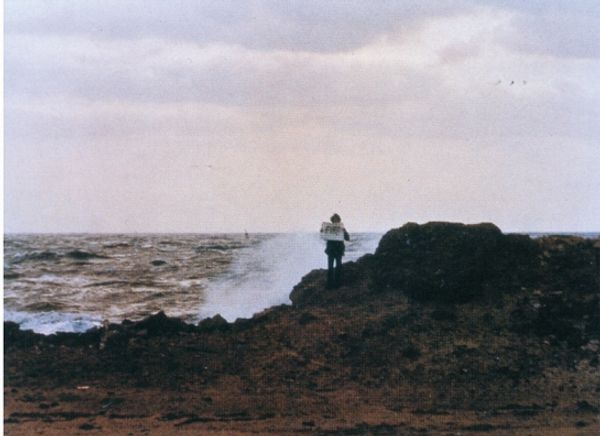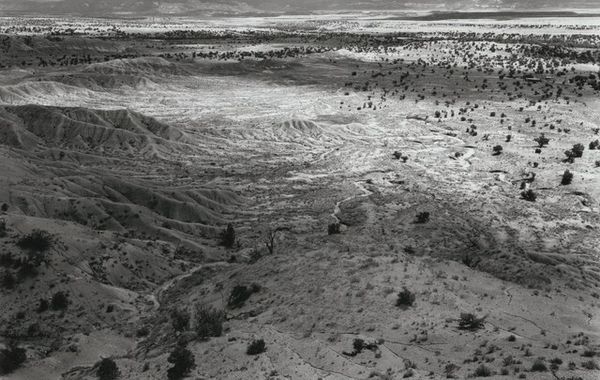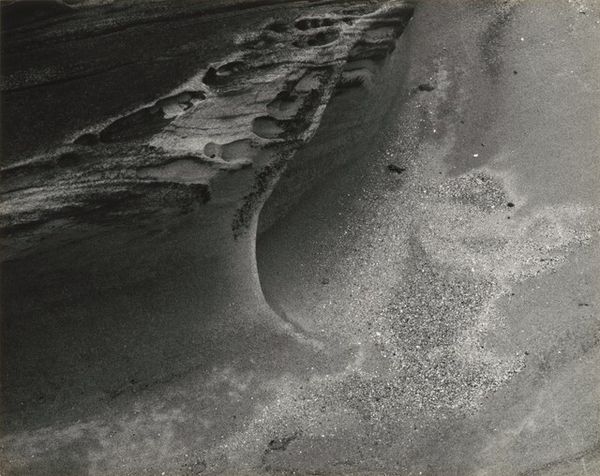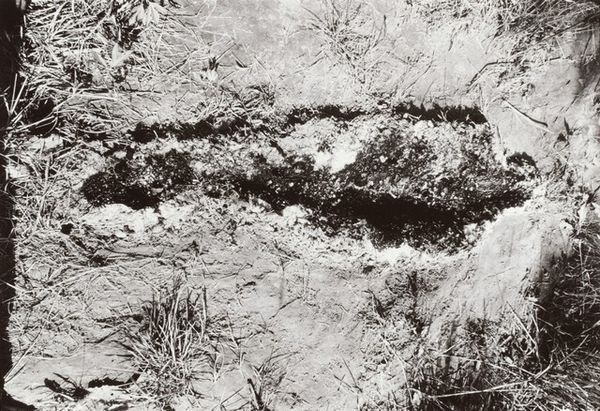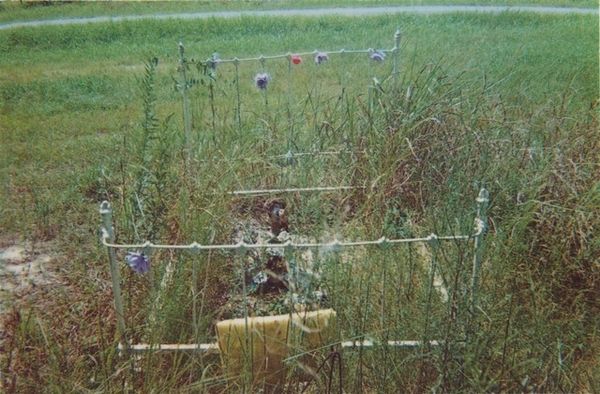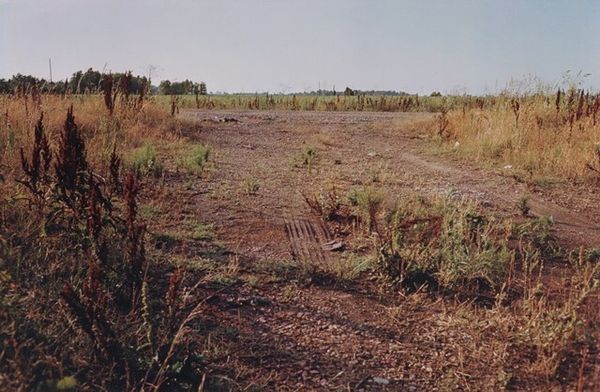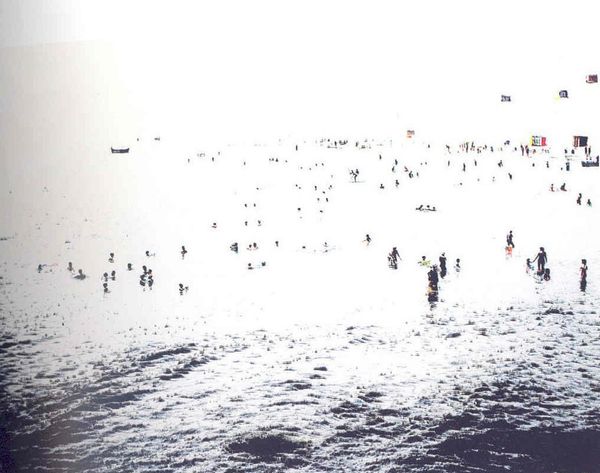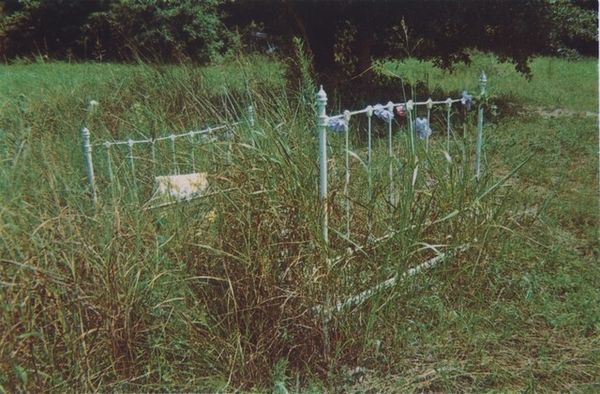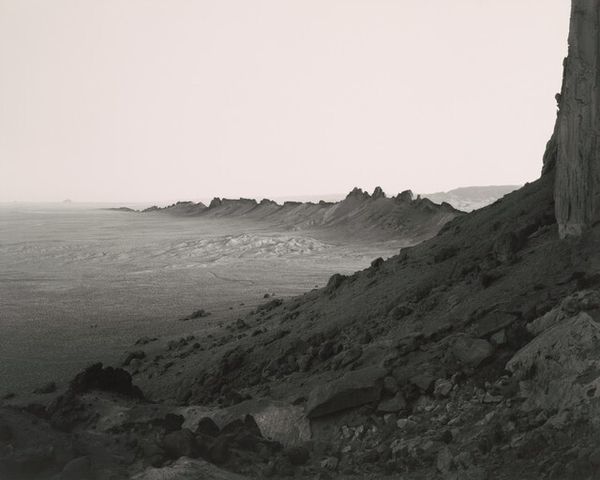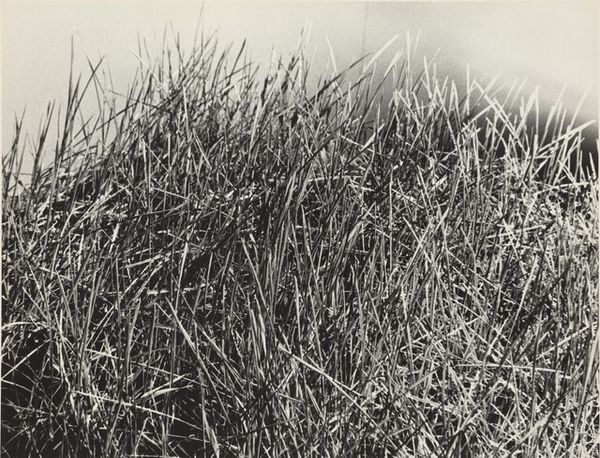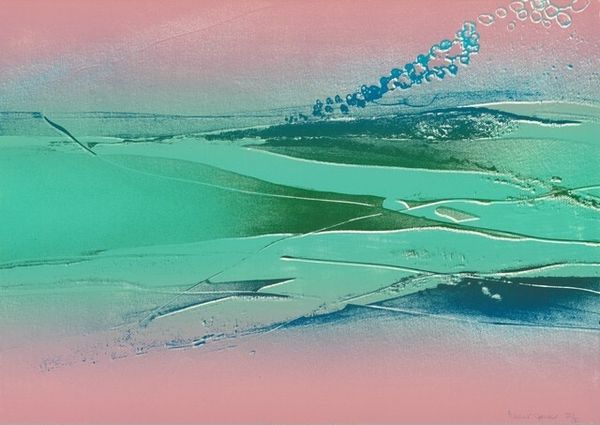
acrylic-paint, site-specific
#
sky
#
conceptual-art
#
minimalism
#
landscape
#
land-art
#
acrylic-paint
#
nature
#
environmental-art
#
site-specific
#
nature environment
#
abstraction
#
sea
Copyright: Lita Albuquerque,Fair Use
Editor: We’re looking at Lita Albuquerque’s “Malibu Line” from 1978, created using acrylic paint on the landscape. It's a strikingly simple composition, but the vibrant blue line cutting through the earthy terrain and meeting the ocean feels incredibly powerful. What do you see in this piece, and how does it connect to the broader art movements of the time? Curator: What I find fascinating is Albuquerque's engagement with the environment and the socio-political implications of Land Art. Think about the late 70s - a time of increasing environmental awareness, but also persisting inequalities. How does Albuquerque, as a woman artist working within a predominantly male Land Art scene, use the landscape to address or subvert established power dynamics? The stark, geometric intervention on the natural environment speaks to the tradition of Minimalism, yet the ephemeral nature of the acrylic line resists the permanence often associated with monumental Land Art projects. Is she perhaps questioning the power structures embedded even in supposedly 'earth-friendly' artistic gestures? Editor: That’s interesting. I hadn't considered the feminist perspective within Land Art. The line almost seems like a challenge to traditional landscape painting, staking a claim on the territory. Curator: Exactly. It is vital to also note the use of ephemeral materials, directly contesting the more monumental gestures often adopted by male artists, emphasizing the impact that Land Art had on its natural landscapes, as well as the impact of artistic power dynamics on culture. By employing bright pigment to disrupt the pre-existing harmony of sea and land, Albuquerque underscores the influence of modern industry in our current understanding of environmentalism and activism. The simplicity serves as a powerful tool here, I think. Editor: I see what you mean. It reframes the conversation. I’ll never look at Land Art the same way. Curator: And hopefully it sparks reflection beyond the aesthetic into the narratives of power, gender, and environment that underpin our understanding of art and the world around us.
Comments
No comments
Be the first to comment and join the conversation on the ultimate creative platform.
